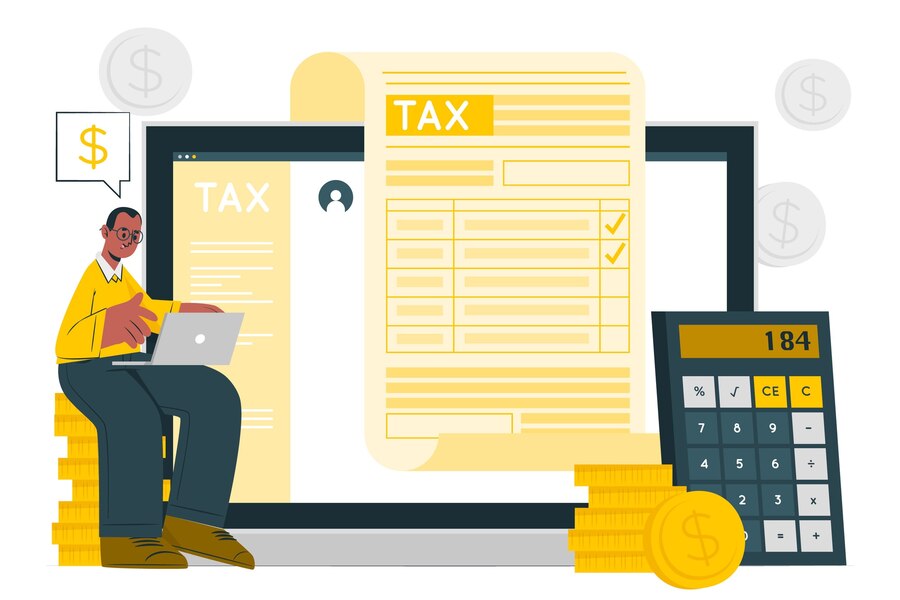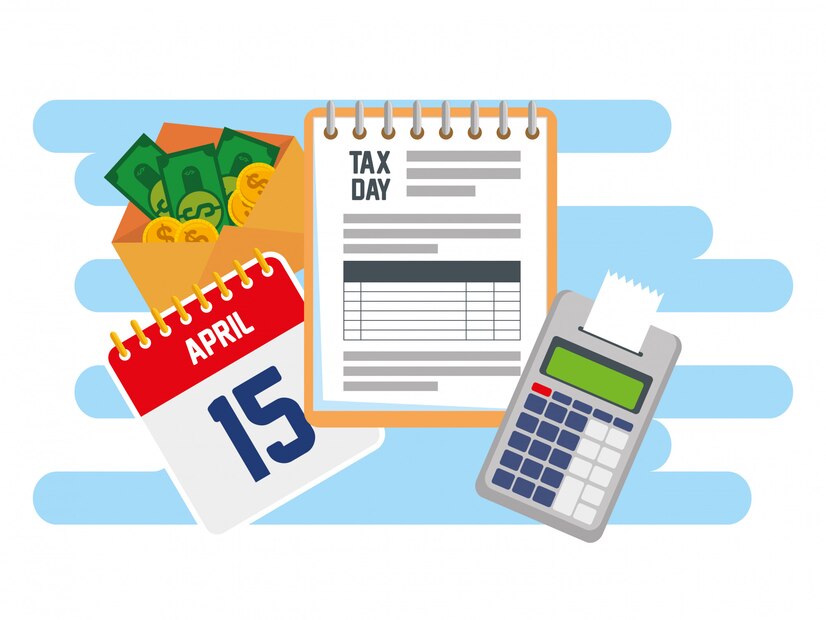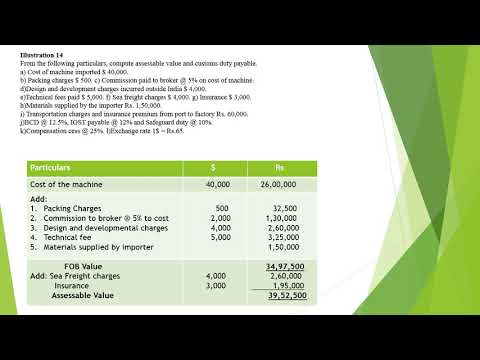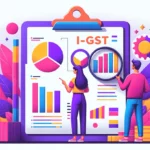Key Takeaway
- Incidental Expenses in GST: Costs directly associated with preparing goods or services for sale, like transportation and packaging, are included in the taxable value.
- Including Recipient-Paid Amounts: Amounts paid by recipients that are essential for the transaction must be included in the taxable supply for accurate GST calculation.
- Penalties for Underreporting: Omitting necessary charges in the taxable value can result in fines, interest on unpaid taxes, and audits.
- GST on Estimated Values: GST can be initially calculated on estimated values and must be adjusted once the actual values are known.
- Impact on Multinational Companies: Variations in assessable value across different countries can complicate financial reporting and tax compliance for multinational corporations.
In today’s fast-paced economic environment, understanding the intricacies of Goods and Services Tax (GST) is crucial for businesses and professionals. This article will guide you through the essential elements of determining the value of taxable supply under GST, the relevant tax laws for invoicing, and how to accurately calculate GST in invoices.

Value of Taxable Supply as per Section 15
To provide a thorough understanding of the Value of Taxable Supply as outlined in Section 15, let’s explore the key elements and how specific keywords and concepts play into the calculation and implications of GST (Goods and Services Tax). The main focus will be on ensuring that all aspects of the value of the supply are clearly understood for accurate GST computation.
- Input Tax Credit: Input Tax Credit (ITC) is a mechanism in the GST framework that allows businesses to reduce their tax liability by claiming credit for the tax paid on purchases. The value of the taxable supply does not directly include the amount of ITC but impacts the net tax liability of a business. This plays a crucial role in determining the final cost to the consumer and the net revenue for the supplier.
- GST Rate: The GST rate applied to a supply depends on its classification under the GST tariff. The value of the taxable supply is crucial in determining how much tax is levied on a product or service. Different rates may apply depending on the type of goods or services, which directly affects the computation of GST on the total supply value.
- Sole Consideration In the context of GST, the sole consideration refers to the total amount payable for a supply, which forms the basis for calculating GST. Any additional considerations, unless exempt, should be included in the value of the taxable supply. This ensures that the tax reflects the total value of the transaction.
- Customs Duty and Additional Duties: While Customs Duty, Basic Customs Duty, Additional Customs Duty, and other related charges like Anti-Dumping Duty and Safeguard Duty are primarily relevant to imported goods, their inclusion in the cost of goods affects the assessable value for GST. For imported goods, GST is calculated on the value that includes these duties, making the understanding of customs charges essential for determining the correct GST liability.
- Excise Duty: Although Excise Duty has been subsumed under GST for most products, understanding its previous application is necessary for dealing with products still under the excise regime, like petroleum products. The taxable value for these products would include excise duties, affecting the overall GST computation.
- Recipient Of Supply and Reverse Charge: In certain cases, the recipient of the supply is liable to pay GST under the reverse charge mechanism. The value of such supplies must include all the components that the supplier would typically include. This is crucial for compliance and accurate tax reporting.
- Packing Charges: Packing charges, if any, charged by the supplier to the recipient form part of the value of supply if they are not optional. These charges should be included in the taxable value as they are considered to be part of the consideration for the supply.
- Calculating GST on the Total Value: The total taxable value, including all additional levies and charges as discussed, forms the basis on which GST is calculated. Understanding each element that can or cannot be included in this value is crucial for accurate GST computation and compliance.
Value Does Not Include GST but Includes Other Taxes
The value of taxable supply is calculated, which is crucial for compliance and accurate tax filing. One of the key principles in calculating this value is that it does not include GST but does include other applicable taxes. This distinction is vital for ensuring that GST is applied correctly to the net transaction value, excluding the GST itself, to avoid a cascading tax effect.
When calculating the GST on a supply, the GST amount itself is not included in the taxable value. This approach prevents double taxation—taxing a tax—which aligns with the fundamental principles of GST designed to make the tax system more efficient by eliminating the cascading effect of taxes.
Includes Other Taxes
However, other taxes that are levied in addition to GST are included in the taxable value. These can include, but are not limited to:
- Customs Duty: For imported goods, the customs duty paid is part of the cost of acquisition, which is included in the value on which GST is calculated.
- Excise Duty: Certain goods, like petroleum products, which are still subject to excise duty apart from GST, will have this duty included in their taxable supply value.
- State-specific Levies: Some states may impose additional taxes on specific types of goods and services, which should be included in the taxable value for GST calculation.
- Cess: Any type of cess, such as the Education Cess, applied on specific goods or services, is also included in the value of the taxable supply.
Including these taxes in the taxable value ensures that the GST reflects the total economic value of the transaction and not just the base price of the goods or services provided. This method of calculation aids in the creation of a more transparent and equitable tax system where the tax burden is proportionate to the overall cost to the consumer.
Implications for Businesses
Understanding that GST is not included but other taxes are in the value of taxable supply has several implications for businesses:
- Accurate Invoicing: Businesses must ensure that their invoices clearly differentiate between GST and other taxes while providing a comprehensive total taxable value.
- Tax Credit Claims: Properly accounting for other taxes in the taxable value is crucial for accurately claiming input tax credits.
- Compliance and Reporting: Compliance with GST laws requires adherence to these valuation principles, and accurate reporting is essential for audits and inspections.
Amount Paid by Recipient on Behalf of Supplier
When calculating the GST on transactions, one crucial component often overlooked is the amount that the recipient pays on behalf of the supplier. This includes various charges and duties, such as import duty, which are essential for determining the accurate value of taxable supply. Understanding how these payments affect the taxable supply helps ensure compliance and accurate tax reporting.

When a recipient makes payments directly to third parties or incurs costs on behalf of the supplier, these payments must be included in the value of the taxable supply for GST purposes. This ensures that the GST reflects the total cost associated with the transaction.
- Import Duty
One of the most common costs paid by the recipient that must be included in the taxable supply value is the import duty. Import duties are taxes collected on goods imported into a country. When the recipient pays this duty on behalf of the supplier, it forms part of the transaction’s value, affecting the GST calculations.
- Including Import Duty in Taxable Supply
- Customs Valuation (Determination of Value of Imported Goods): The value of imported goods is crucial for calculating import duty. This same value, inclusive of the duty paid, becomes part of the taxable supply for GST purposes.
- Inclusive of Other Charges: Alongside import duty, other costs often paid by the recipient, such as freight, insurance, and handling fees, also need to be included. These costs are part of the ‘transaction value,’ which is the basis for the GST calculation.
- Legal Compliance: Including these payments in the taxable supply is not just a practical accounting measure but a legal requirement under GST law. It ensures transparency in the tax system and fairness in how taxes are applied across different transactions.
- Impact on Tax Credits: By including these additional costs in the taxable value, businesses can claim higher input tax credits, which are crucial for managing overall tax liability. This reflects the total amount of GST paid during the supply chain, leading to more accurate tax recovery.
- Incidental Expenses Incurred Before Supply
In the realm of GST (Goods and Services Tax), incidental expenses incurred before the supply of goods or services play a significant role in determining the value of taxable supply. These costs are essential for calculating the correct amount of GST due, as they directly affect the transaction value. Understanding these expenses and their inclusion in the taxable value is crucial for accurate GST compliance and reporting.
- Incidental Expenses Incurred Before Supply
Incidental expenses refer to costs that are necessary to bring a product or service to the point of sale and can include a variety of charges such as:
- Packing Expenses: Costs associated with packaging the goods for safe transportation or sale.
- Freight Charges: Charges incurred for transporting goods to the seller or from the seller to the buyer.
- Insurance Charges: Costs for insuring the goods during transportation or storage.
- Testing Charges: Expenses related to quality control and testing of the products before they are dispatched for sale.
These expenses are considered part of the value of supply because they are necessary for making the goods or services ready for sale, hence directly impacting the transaction value on which GST is calculated.
- Inclusion of Incidental Expenses in Taxable Supply
According to GST legislation, the ‘transaction value’ is the price actually paid or payable for the said supply, where the price is the sole consideration. This value includes all incidental expenses charged by the supplier to the recipient before the delivery of the goods or the performance of the service. Here’s how these expenses are factored into the taxable supply:
- Calculation of Taxable Value: The total cost that the consumer will pay, which includes the base price plus any incidental costs that occur prior to the completion of the sale, forms the taxable value.
- Impact on Invoice: The relevant invoice must detail these incidental expenses separately or include them in the total invoice amount, ensuring that they are transparent and accounted for in the GST calculation.
- Legal Compliance: Properly documenting and including these costs is not just a matter of accurate bookkeeping but also of legal compliance, affecting both input tax credit claims and tax liabilities.
Examples of Incidental Expenses
For example, if a manufacturer ships machinery to a retailer, the cost of crating, packing, and insurance until delivery at the retailer’s warehouse must be included in the invoice value. These expenses increase the taxable value of the supply, thereby increasing the GST payable.
Similarly, in services, if a consultancy service involves travel expenses incurred by the service provider before the actual delivery of the service, these should be included in the taxable supply’s value if billed to the client.
Interest, Late Fee, or Penalty for Delayed Payment

When managing the financial aspects of a supply chain, it’s crucial to consider how interest, late fees, or penalties for delayed payments relate to the overall supply and impact the GST calculations. These additional costs are critical for maintaining the integrity of financial transactions and ensuring compliance with taxation laws.
- Interest for Delayed Payment: This is charged when a payment is not made within the stipulated time frame agreed upon between the supplier and the recipient. Interest is calculated based on the overdue amount and the time period of the delay. In the context of GST, this interest is considered part of the transaction value, hence it must be included in the taxable amount.
- Late Fees: These are charges imposed by suppliers on recipients for not meeting the payment deadlines. Late fees serve as a penalty but are also a part of the transaction, reflecting additional consideration received by the supplier for providing the service or goods under delayed terms.
- Penalties for Non-compliance: Penalties may be applied in various scenarios, such as failure to meet contractual obligations or delays in supply. When these penalties are directly related to the supply of goods or services, they must be included in the transaction value for GST purposes.
Tax Payable When Value is Inclusive of GST
When a price is quoted inclusive of GST, it means that the advertised price is the total amount the customer will pay, which includes the GST. To find the taxable value and the GST amount from such a price, the GST fraction relevant to the applicable tax rate must be applied.
Calculation Method
The general formula to calculate the GST amount from a price that is inclusive of GST is:
GST Amount=Inclusive Price × GST Rate 100 + GST Rate
GST Amount= 100+GST Rate
Inclusive Price × GST Rate
Here’s a breakdown of the calculation:
Determine the GST Rate: Identify the GST rate applicable to the goods or services being provided. This rate is crucial as it impacts the division factor in the formula.
Apply the Formula: Use the inclusive price (the total amount including GST) and the GST rate in the formula to find the GST amount.
Calculate the Taxable Value: Subtract the GST amount from the inclusive price to find the taxable value, which is the price without GST.
Example Calculation
Suppose a product is sold for an inclusive price of $110, and the applicable GST rate is 10%. The calculation would be:
GST Amount=110×10100+10=110×10110=10GST Amount=100+10110×10=110110×10=10
Thus, the taxable value is: Taxable Value=110−10=100Taxable Value=110−10=100
What are Tax Laws Applicable for Invoicing?
Various tax laws dictate how invoices should be structured and what elements they must contain. Understanding these regulations is vital to ensuring compliance and facilitating proper tax credit claims by recipients.
- GST Compliance: In jurisdictions where GST is applicable, invoices must detail the GST charged on each item or service, along with the GST rate and the total GST amount. This is crucial for both the supplier and the recipient for the accurate calculation of input tax credits.
- VAT Regulations: Similar to GST, in regions where VAT is applicable, invoices must clearly specify the VAT amount, the VAT rate applied, and the total price including VAT. This enables both parties to comply with VAT reporting requirements.
- Issuance Timing: Tax laws typically specify the timeframe within which an invoice must be issued post-transaction. This is critical for accounting and tax reporting purposes.
- Mandatory Fields: Invoices are required to have certain mandatory fields such as the date of issue, a unique invoice number, the supplier’s and customer’s tax identification numbers, and a detailed description of goods or services provided.
- Digital Invoicing Requirements: With the increasing move towards digitalization, specific rules may govern electronic invoices, ensuring they meet the same standards as paper invoices for authenticity and integrity through electronic signatures or relevant secure systems.
- Record Keeping: Tax laws mandate that invoices must be kept for a certain number of years (which varies by country) to support audits and other tax compliance checks.
Importance of Raising an Accurate Tax Invoice
Raising an accurate tax invoice is crucial for maintaining compliance with tax laws and ensuring smooth financial operations for both suppliers and recipients. Accurate invoices serve as a legal document for transactions, are vital for proper accounting, and are necessary for both parties to claim applicable tax credits. Here’s why accuracy in tax invoicing is essential:

- Compliance with Tax Laws
Tax invoices must comply with specific regulations that may include the display of the GST rate, VAT details, or other tax information depending on the jurisdiction. Ensuring that all required details are present and correctly stated is critical to meet legal requirements set forth by tax authorities such as the IRS, HMRC, or the GST Council. Non-compliance can lead to penalties, fines, and other legal complications.
- Facilitation of Input Tax Credit
For businesses, accurate invoicing is essential for claiming input tax credits. The GST system (and similar VAT systems in other countries) allows businesses to reduce the tax they owe by the amount of GST or VAT paid on business expenses, provided these taxes are documented correctly on purchases. Inaccurate invoices can lead to denied tax credits, affecting a business’s cash flow and financial health.
- Audit and Financial Reporting Accuracy
Accurate tax invoices are critical for audit readiness. They serve as proof of sales and purchases and help businesses prepare accurate financial statements. Discrepancies in invoicing can lead to audit issues, including tax reassessments and penalties for underreporting taxes due.
Dispute Avoidance and Customer Relationships
Accurate invoicing reflects professionalism and helps in building trust with clients. It minimizes conflicts over billing, as everything is clearly itemized and documented. This transparency can enhance business relationships and lead to repeat customers.
Details Typically Included on an Accurate Tax Invoice
- Supplier and Customer Details: Names, addresses, and tax identification numbers (like VAT number, GSTIN).
- Invoice Date: The date when the invoice is issued.
- Description of Goods or Services: Detailed description of goods or services sold, including quantities and prices.
- Taxable Value: The value of the goods or services that is subject to tax.
- Tax Rate and Amount: The applicable tax rate (e.g., GST rate) and the total tax amount.
- Invoice Number: A unique number that follows a sequential order, crucial for record-keeping and tracking.
- Additional Details: Such as discounts, shipping charges, and terms of sale.
What is an Assessable Value Under Different Tax Laws?
The concept of “assessable value” under different tax laws is a critical element in determining the amount of tax that must be paid on various transactions. This value forms the basis for the calculation of taxes such as customs duty, GST, VAT, and other related levies. Understanding how assessable value is determined under different tax regimes is essential for compliance and accurate tax reporting.
- Assessable Value under Customs Duty
Under customs regulations, the assessable value is the value on which customs duty is calculated. It typically includes the cost of the goods, insurance, freight, and any other charges up to the port of entry. This value is crucial for determining the customs duty payable when goods are imported into a country. The assessable value must align with the World Trade Organization’s (WTO) valuation agreement, which many countries follow.
- Assessable Value under GST
In the context of GST (Goods and Services Tax), the assessable value is the transaction value of the goods or services. This value includes the price paid or payable for the supply, excluding the tax itself but inclusive of other levies, charges, and discounts known at the time of supply. It forms the basis for calculating the GST payable on goods and services sold within a country.
Similar to GST, under VAT systems, the assessable value is the amount on which VAT is calculated. It encompasses the total cost of the product or service, including additional charges such as shipping and handling, minus any VAT already paid on inputs. This method prevents the cascading effect of taxes, allowing businesses to deduct the tax paid on inputs from the VAT liabilities on outputs.
Key Considerations in Assessing Value
- Inclusivity of Costs: All costs that contribute to bringing the product to sale, such as production, shipping, and insurance, are typically included in the assessable value.
- Exclusions: Post-sale discounts, rebates, and incentives that are not known at the time of sale are generally excluded from the assessable value.
- Documentation and Compliance: Maintaining accurate and comprehensive records to justify the declared assessable value is crucial for compliance with tax laws.
- Global Standards and Compliance: In international trade, the assessable value is also influenced by global standards set by bodies such as the WTO. Countries often require detailed documentation to ensure that the declared value complies with international trade norms and their own domestic tax laws.
How to Calculate GST in the Invoice?
Calculating GST (Goods and Services Tax) on an invoice is a critical process that ensures compliance with tax laws and accurate financial reporting. Below is a step-by-step guide on how to compute GST for an invoice, incorporating essential elements to adhere to regulatory requirements.

Steps to Calculate GST on an Invoice
- Step 1: Identify the Taxable Supply: Determine which goods or services in the invoice are taxable. Most items are typically subject to GST, but some may be zero-rated or exempt.
- Step 2: Determine the Taxable Value: This is the amount that GST is calculated on. It includes the cost of the goods or services, any additional charges like delivery or installation, and excludes any discounts or rebates that are known at the time of sale.
- Step 3: Apply the Applicable GST Rate: The GST rate to be applied depends on the nature of goods or services sold. This rate can vary by country and sometimes within different regions of a country. Common rates include standard, reduced, or zero rates.
- Step 4: Calculate the GST Amount: Multiply the taxable value by the GST rate. For example, if the taxable value is $100 and the GST rate is 10%, the GST amount would be $10.
- Step 5: Add the GST to the Net Amount: To find the total amount payable, add the GST amount to the net taxable value of the supply.
- Step 6: Issue the Invoice: The invoice should clearly state the net amount, GST amount, and the total amount due. It should also include mandatory details such as the business’s GSTIN (GST Identification Number), the customer’s GSTIN (if applicable), and a unique invoice number.
Example Calculation
Suppose you are issuing an invoice for the supply of machinery worth $1,000, and the applicable GST rate is 10%. Here’s how you would calculate the GST:
- Net Amount (Taxable Value): $1,000
- GST Rate: 10%
- GST Amount: $1,000 x 10% = $100
- Total Invoice Amount: $1,000 + $100 = $1,100
The invoice should detail these amounts and include all other required information to ensure it complies with GST regulations.
Key Considerations
- Compliant Invoices: Ensure that invoices are compliant with local GST laws, which might require specific information to be displayed, such as the breakdown of GST for each item, especially in jurisdictions with multiple tax rates.
- Digital Invoicing Standards: Many countries are moving towards mandatory electronic invoicing systems that require digital compliance and specific formats to be followed.
- Record Keeping: Maintain thorough records of all invoices issued and received, as they are crucial for GST reporting and audits.
- Software and Tools: Utilize accounting software or invoicing tools that automatically calculate GST based on the inputs of taxable value and GST rate. This helps reduce errors and streamlines the invoicing process.
Conclusion
The complexities of GST and invoice calculation is crucial for maintaining compliance and ensuring business operations run smoothly. By understanding and applying the principles outlined in this guide, businesses can ensure accuracy in their tax calculations and avoid potential pitfalls.
💡Missing the deadline to pay GST payments? Download Pice and start using a credit card to pay GST on time, experience efficiency and convenience, and manage cash flow more effectively.
FAQs
What is considered an incidental expense in the context of GST?
Incidental expenses in the context of GST include costs that are necessary to bring the goods or services to their current location and condition for sale. This can include packing, commissioning, loading, unloading, and transportation costs. If the supplier bears these costs and charges the customer, they are part of the taxable value.
How do you determine if an amount should be included in the taxable supply when paid by the recipient?
An amount paid by the recipient should be included in the taxable supply if it is a condition of the sale, directly linked to the price of the goods or services, or if the payment is for expenses that the supplier is obligated to pay but has been paid by the recipient instead. This ensures that the GST reflects the full cost of the goods or services.
What are the penalties for not including necessary charges in the taxable value?
Not including necessary charges in the taxable value can lead to penalties such as fines, interest on underpaid taxes, and potential audits. Regulatory authorities may impose these penalties to enforce compliance with GST laws, ensuring that all taxable components of a transaction are duly reported and taxed.
Can GST be calculated on an estimate if the exact value isn’t known at the time of supply?
GST can be calculated on an estimated basis if the exact value is not known at the time of supply, but it must be adjusted in subsequent tax periods once the actual value is determined. This process allows for provisional compliance with GST requirements, with a final settlement to follow based on precise figures.
How do differences in assessable value impact multinational companies?
Differences in assessable value can significantly impact multinational companies by affecting the amount of GST or VAT they need to pay in different jurisdictions. This can lead to complexities in financial reporting, cash flow variations, and a need for meticulous reconciliation to comply with varying international tax laws and regulations.








